Yes! Braces can fix an overbite! At Rise + Smile Orthodontics, we fix overbites with braces and Invisalign every day out here in south Austin, Texas. As up to 63% of the population has excess overbite, chances are you know someone who has an overbite. With protruding front teeth, this type of bite can affect not only the aesthetics of one’s smile but also oral health and self-confidence. Fortunately, braces can help. Understanding the complexities of this condition and the role good orthodontics can play in its correction, however, is crucial for those considering orthodontic treatment. In this article, we delve into what an overbite is, the etiology of this malocclusion, when to see an orthodontist for an overbite, and how braces and Invisalign can help fix an overbite.
What is an Overbite?
It’s important that we actually define what an overbite is because many people have different ideas on the definition. Overbite is the distance between the upper and lower front teeth in the horizontal direction. In other words, overbite is when the upper teeth protrude too far forward in front the lower teeth. It is defined by tooth position and not facial esthetics or jaw structure (though jaw structure can influence tooth position). The technical term for overbite is overjet. It’s a common condition and can vary in severity from person to person.
On the other hand, a deep bite refers to the distance between the upper and lower front teeth in the vertical direction. If the lower front teeth are mostly hiding behind the upper front teeth when you’re biting down, then you have a deep bite. Here is a curious fact that can be confusing: the technical term for deep bite is overbite. Even though this is the technical term, most people do not understand overbite to have this meaning. Often the technical terms are only used when speaking amongst dental professionals. Going forward in this article, the more commonly used term overbite will be used when referring to the horizontal discrepancy where the front teeth are sticking out.
In addition to overbites and deep bites, there are crossbites, underbites, open bites, and scissor bites. We won’t go into the details and differences between these types of bites, but the great news is that a board-certified orthodontist like Dr. Faulkner can fix these malocclusions with braces and Invisalign as well.
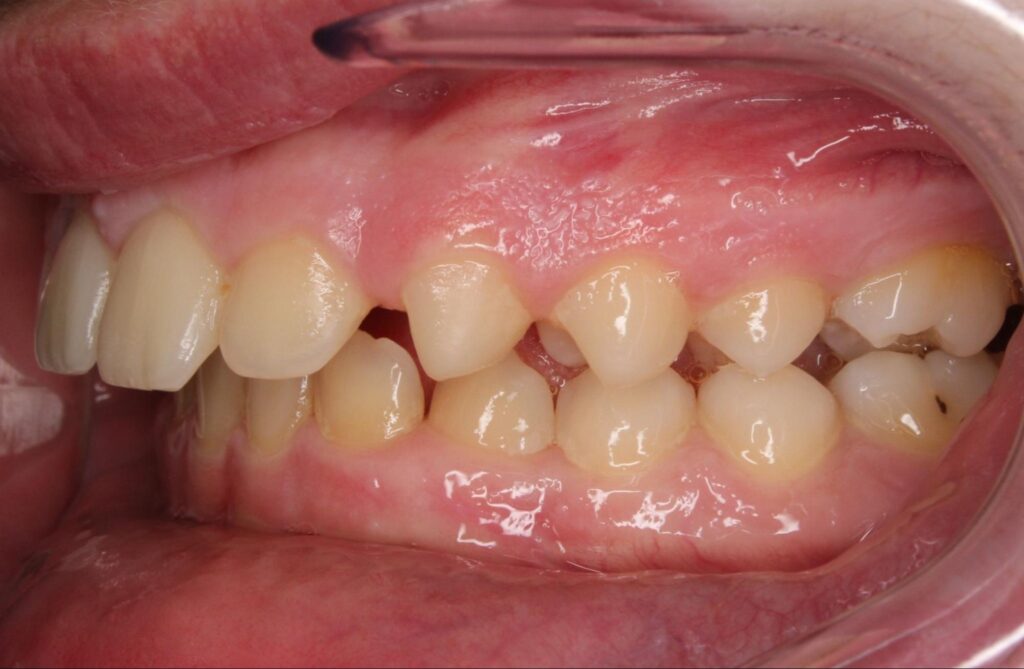
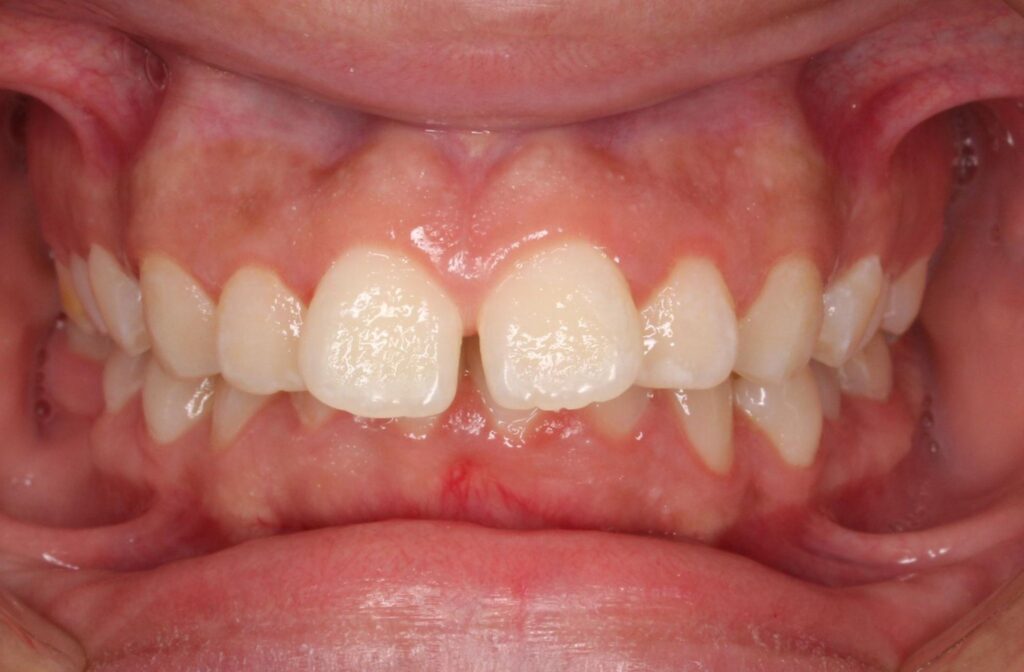
What Causes an Overbite?
There are many causes of an overbite, and often the etiology is multifactorial meaning there are multiple contributing factors:
Jaw size discrepancy: A mismatch between the size of the upper and lower jaws can result in an overbite. For example, if the upper jaw is larger than the lower jaw, it can cause the upper front teeth to protrude over the lower front teeth. While this is primarily related to genetic factors, habits and other environmental factors can play a role.
Oral habits: Certain habits during childhood, such as thumb sucking, prolonged pacifier use, tongue thrusting, or mouth breathing can affect the development of the jaw and teeth alignment, potentially leading to an overbite.
Missing or crowded teeth: Irregularities in tooth size or spacing can contribute to the development of an overbite. Missing teeth or crowded teeth may cause adjacent teeth to shift position, leading to an overbite.
Trauma or injury: Trauma to the face or jaw can disrupt the natural alignment of teeth, potentially resulting in an overbite.
Prolonged bottle feeding: Prolonged bottle feeding, especially beyond infancy, can affect the development of the jaw and tooth alignment, potentially leading to malocclusions like an overbite.
Overall, the etiology of an overbite is often multifactorial, with a combination of genetic predisposition, environmental factors, and developmental influences playing a role in its development.
What is the Best Age to Fix an Overbite?
The best age to fix an overbite can vary depending on several factors, including the severity of the overbite, the growth stage of the individual, and the chosen treatment method. Generally, the ideal age to see an orthodontist for an overbite is at the age of 7 years old. Having said that, the orthodontist may choose to monitor the overbite for several years depending on the severity and etiology. Most orthodontists, however, will want to treat an overbite prior to the end of puberty when the jaw is still growing and orthodontic appliances can more effectively guide development. Even still, treatment can also be successful in adults. It’s best to consult with an orthodontist who can assess your specific situation and recommend the most appropriate treatment plan for you.
How Do You Fix an Overbite with Braces?
Depending on the overbite severity, the etiology, and the age of the patient, there are a variety of approaches and treatments that an orthodontist may use to correct an overbite:
Braces and elastics: Many overbites can be fixed by using traditional braces in conjunction with elastics or rubber bands. The braces gradually move the teeth into proper alignment while the rubber bands help coordinate the top and bottom teeth into a more favorable position. The majority of overbites can be corrected or improved with this simple approach.
Functional appliances: More complex overbites may require the use of special orthodontic devices that are designed to correct the position of the jaws and teeth. At Rise + Smile Orthodontics in Austin, TX, our board-certified orthodontist typically uses a Forsus Appliance with braces when this approach is warranted. This appliance is most effective during the initial phases of the adolescent growth spurt. Other orthodontists may opt to use appliances such as headgear or a Herbst.
Extractions: While extractions are often not warranted, there are situations where the overbite is combined with severe crowding that may lead an orthodontist to recommend extractions to correct both the crowding and overbite. Facial esthetics, airway, and periodontal health must be considered when making this decision as well. Generally, extraction treatment will be in conjunction with braces and rubber bands.
Surgery: In more severe cases or when facial esthetics or airway is a large concern, jaw surgery may be required in addition to traditional braces. Patients must be fully grown prior to jaw surgery, so the minimum age to even start this type of treatment is generally 18 years. While jaw surgery may seem daunting, results from this type of treatment are often the most dramatic.
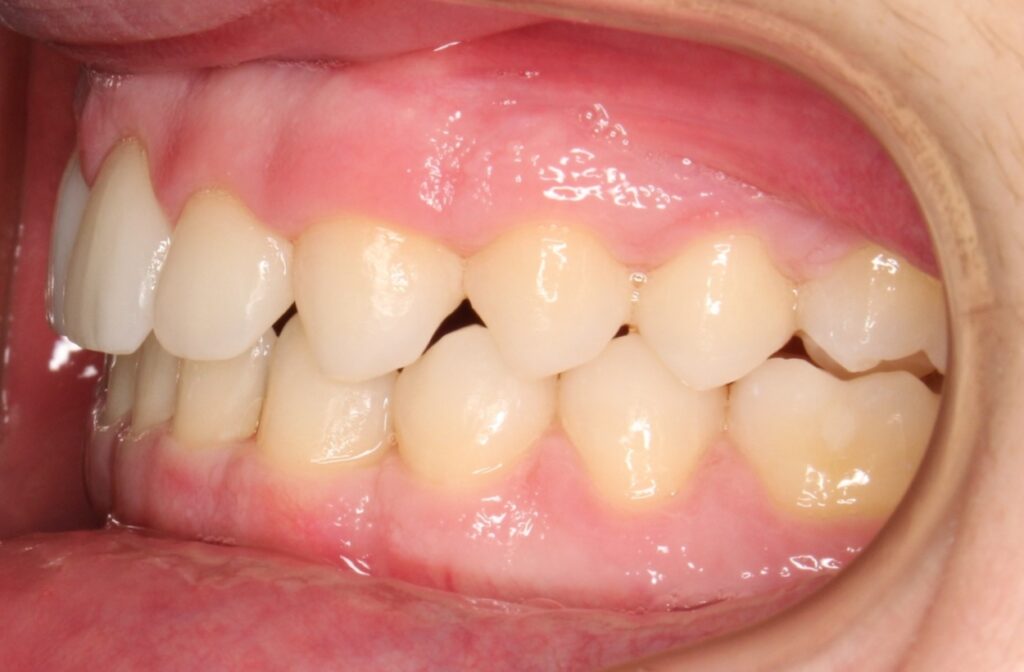
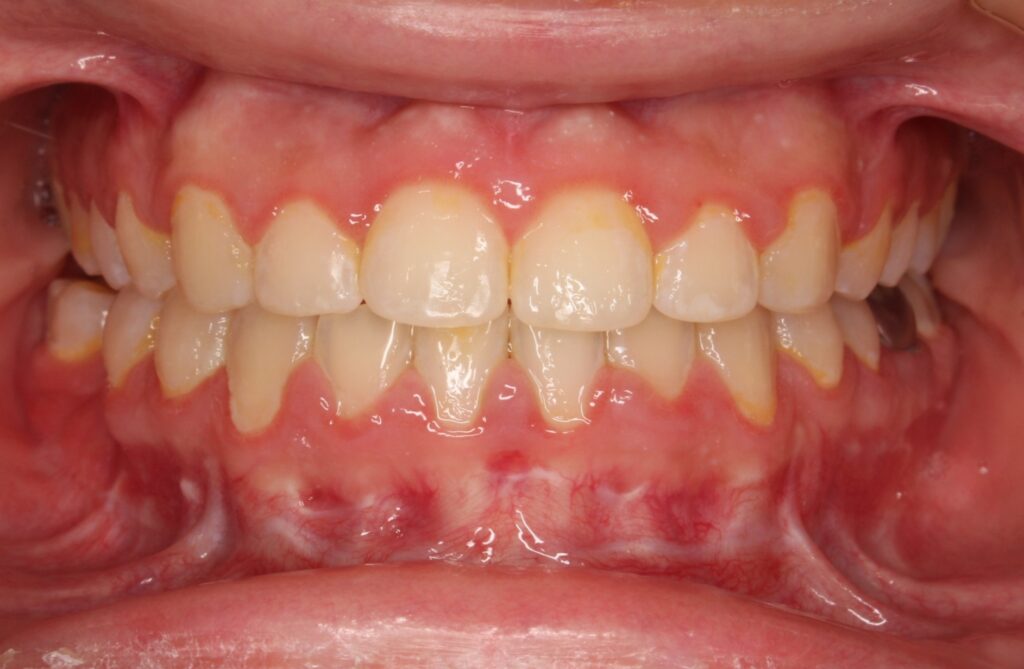
Can Invisalign Fix an Overbite?
In many cases, yes, Invisalign can also fix an overbite. Similar to braces, many overbites can be corrected with Invisalign by using rubber bands to guide the upper and lower teeth into a proper relationship. Most often these rubber bands are attached to the Invisalign tray, but other appliances like a Carriere may also be used. Additionally, the unique features of Invisalign make it possible to push the molars farther back in the mouth one-at-a-time, making space for the front teeth to be pulled back to correct the overbite. This process is called distalization.
For more complex cases, Invisalign can also be used in conjunction with extractions or even jaw surgery to correct an overbite.
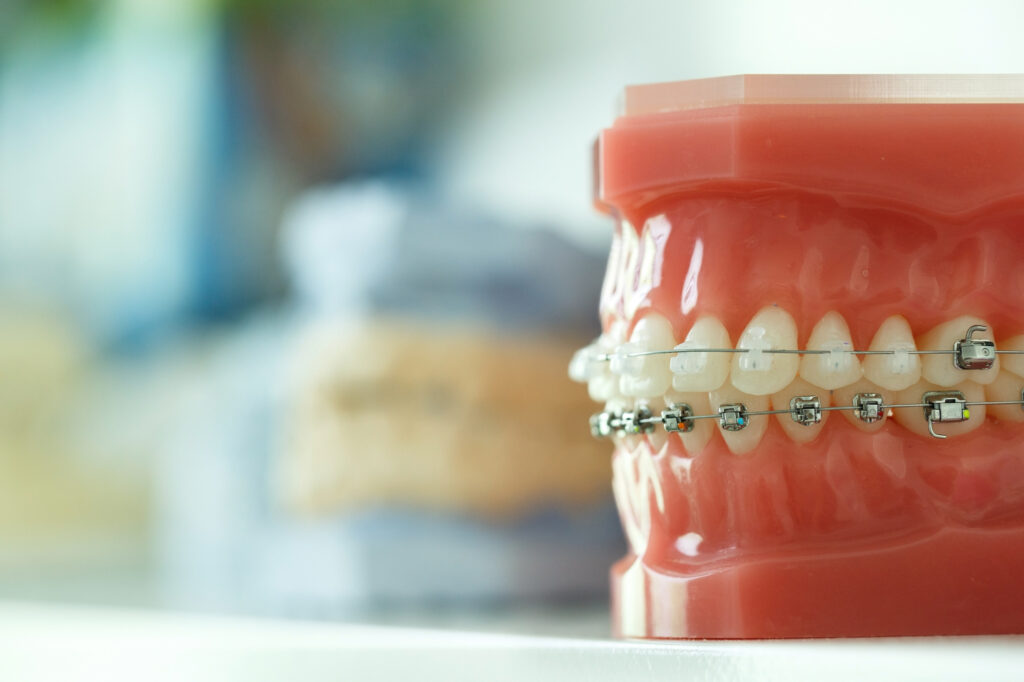
While there are many reasons why someone may have an overbite, and there are varying degrees of severity, the good news is that it can be corrected by either braces or Invisalign in most cases. Early intervention is important, but even overbites in adults can be corrected.
If you’re local to Austin, TX, then please reach out to Rise + Smile Orthodontics to schedule your free consultation with Dr. Mathue Faulkner so that you can discuss the different options for your particular bite.
 (512) 892-1188Free Consult
(512) 892-1188Free Consult


